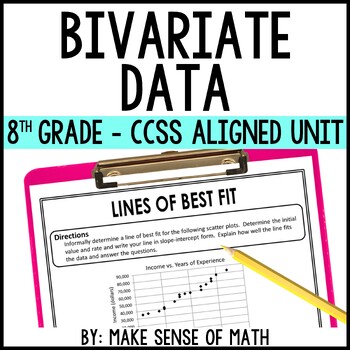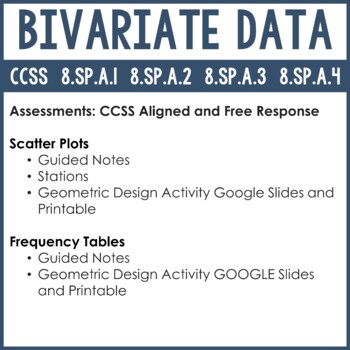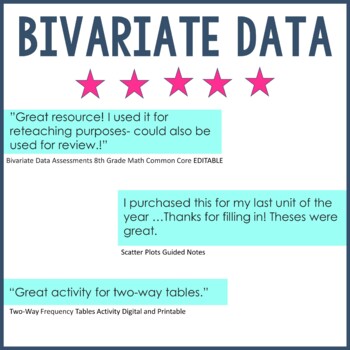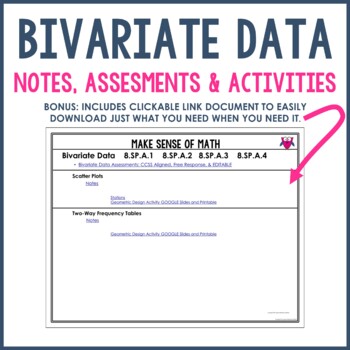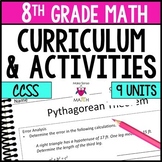Bivariate Data Unit 8th Grade Math CCSS | Scatter Plots and Frequency Tables
- Zip
What educators are saying
Products in this Bundle (6)
showing 1-5 of 6 products
Bonus
Also included in
- Looking for ways to simplify planning while continuing to teach in-depth lessons? This 8th grade math curriculum and activities bundle is for you! This math curriculum is aligned to the 8th grade common core standards. Each unit includes: guided notes, assessments/worksheets and activities such as:Price $200.00Original Price $339.00Save $139.00
Description
This bivariate data unit includes notes, assessments, and stations. This is perfect for your students to dive into scatter plots, lines of best fit and two-way frequency tables. In-depth notes to teach and fun activities to supplement. Aligned to 8th grade math CCSS
By purchasing this bundle, you are saving more than 30% off the full value of the individual resources
Included in this Bundle
- Assessments: CCSS Aligned and Free Response
- Scatter Plots
- Guided Notes
- Stations
- Geometric Design Activity Google Slides and Printable
- Frequency Tables
- Guided Notes
- Geometric Design Activity GOOGLE Slides and Printable
ALL 8th Grade Math Units
- The Real Number System
- Exponents, Scientific Notation, & Roots
- Solving Equations with Variables on Both Sides
- Linear Relationships and Functions
- Systems of Equations
- Pythagorean Theorem
- Parallel Lines and Transformations
- Volume of Cones, Cylinders, and Spheres
- Bivariate Data
Check out the preview for a closer look at the included resources
SAVE even more with the entire 8th Grade Curriculum and Activities Bundle
★ FOLLOW ME for more great products to make sense of math!
Remember that leaving feedback earns you points toward FREE TPT purchases!
Please feel free to contact me with any questions!
Michelle,
Make Sense of Math
makesenseofmath@yahoo.com

